1,575 days, 2,409 entries ...
Newsticker, link list, time machine: HOLO.mg/stream logs emerging trajectories in art, science, technology, and culture––every day
Tech critic Evgeny Morozov launches The Santiago Boys, a podcast chronicling Chile’s Project Cybersyn, the early 1970s fusion of cybernetics with Salvador Allende’s socialist agenda that yielded a technocratic control room (image) that anticipated big data and remains iconic in left-wing thought. Meticulously researched, Morozov tells the story of central consultant Stafford Beer, the CIA-adjacent telco that bankrolled the Pinochet coup, and a forlorn “future where technology helps democracy, not ruins it.”
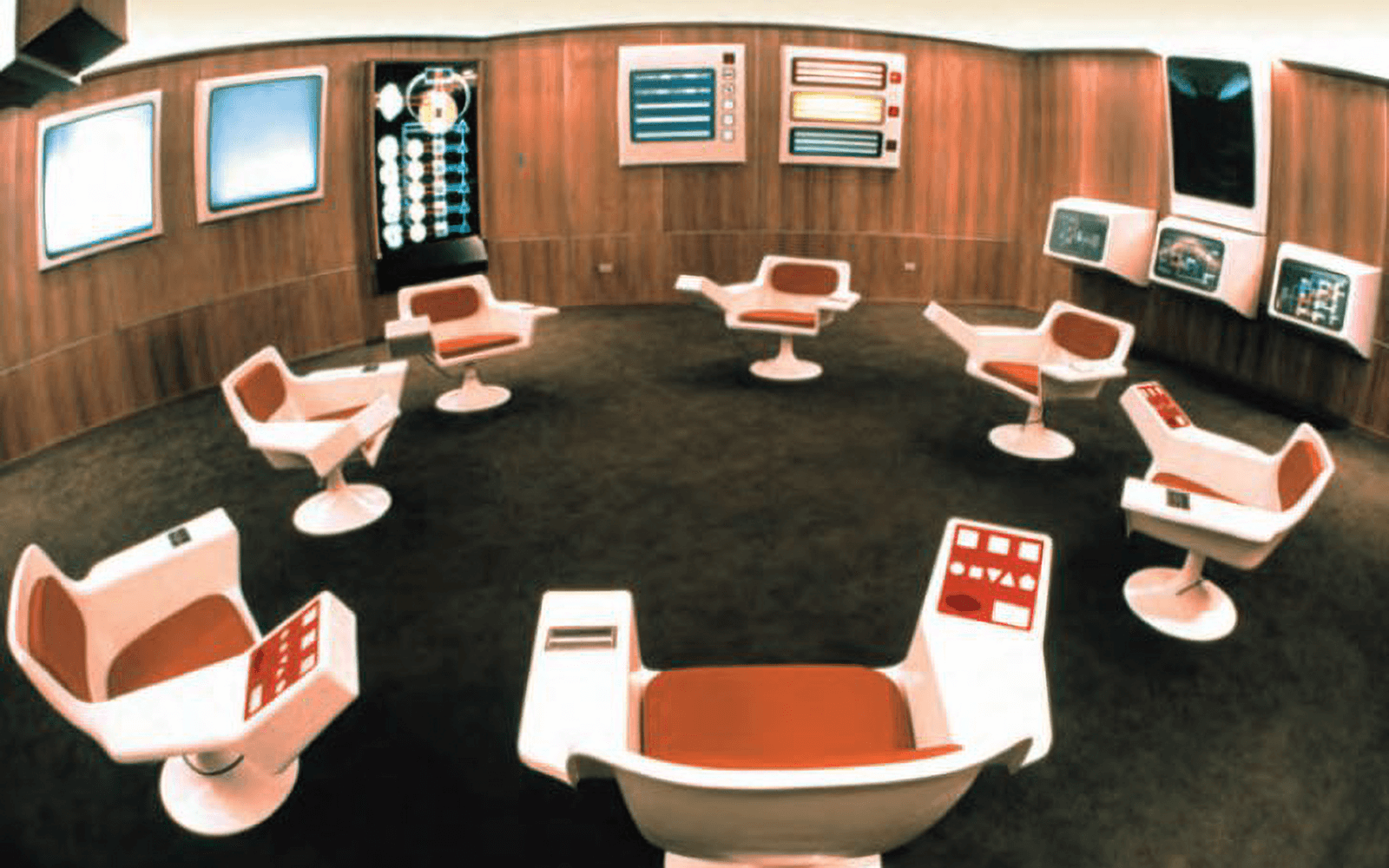
“Catalyst,” a hybrid exhibition featuring artists including Carla Gannis, Auriea Harvey, Caroline Sinders, and Sammie Veeler simultaneously opens at Los Angeles’ Honor Fraser and online at EPOCH. The final instalment in a trio of shows curated by EPOCH’s Peter Wu+ set in CGI models of LACMA and its environs, this edition is set in architect Peter Zumthor’s forthcoming building for the county museum—in post-apocalyptic LA (image). IRL visitors plug-in to the dystopian vision via VR headset.
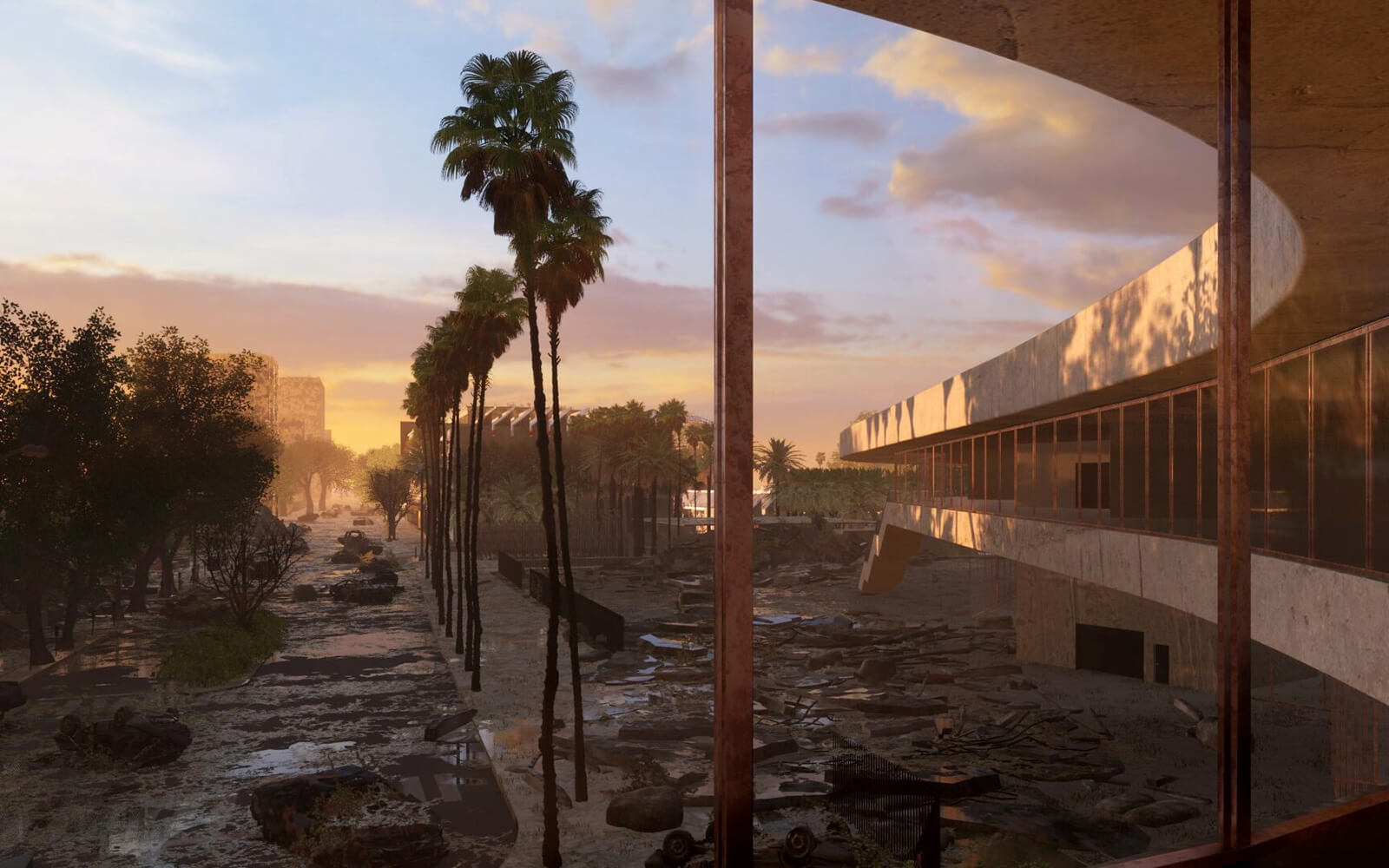
Singapore Art Museum (SAM) launches “Open Systems,” an online exhibition exploring how virtual space is “for rehearsing alternative and novel modes of social, political, and spatial organization.” Cat Bluemke, Total Refusal, and 20 other artists will present works in the coming months, while Alice Bucknell and Lawrence Lek share video essays at launch; the latter’s Pyramid Schemes (2018), repurposes the parkour gameplay of the Assassin’s Creed series to illustrate a polemic about architectural aesthetics.
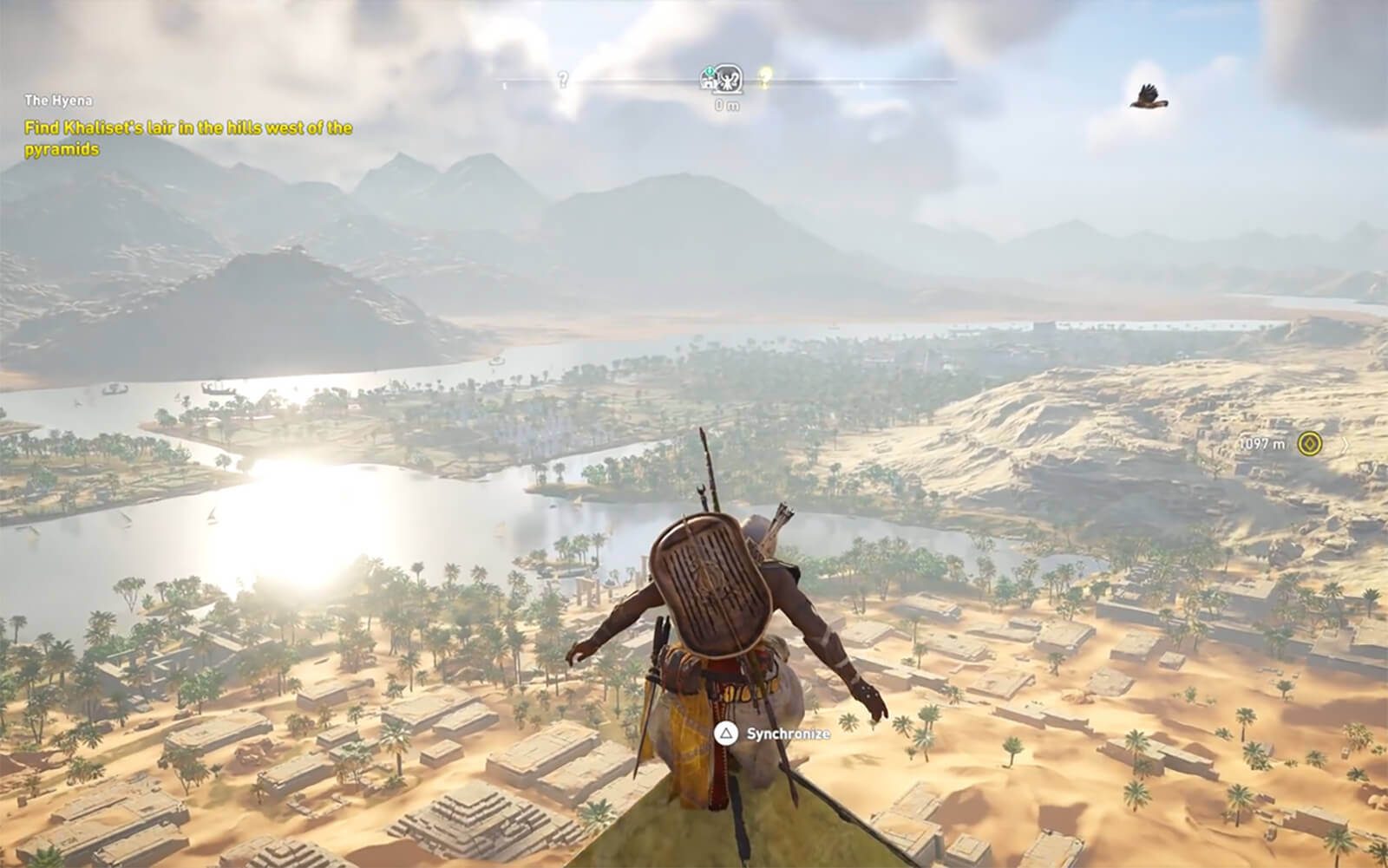
The final instalment in a trilogy of exhibitions fixating on highrises, Jesse Colin Jackson’s “Mackenzie Place” opens at Toronto’s Pari Nadimi Gallery. Venturing to Hay River in the Northwest Territories, the Canadian artist shot a year of time-lapse photography atop Mackenzie Place—the near arctic town’s lone skyscraper. The resulting panoramic video tracks daily and seasonal flux and is bolstered by audio of oral histories about the mining town collected by anthropologist Lindsay Bell.
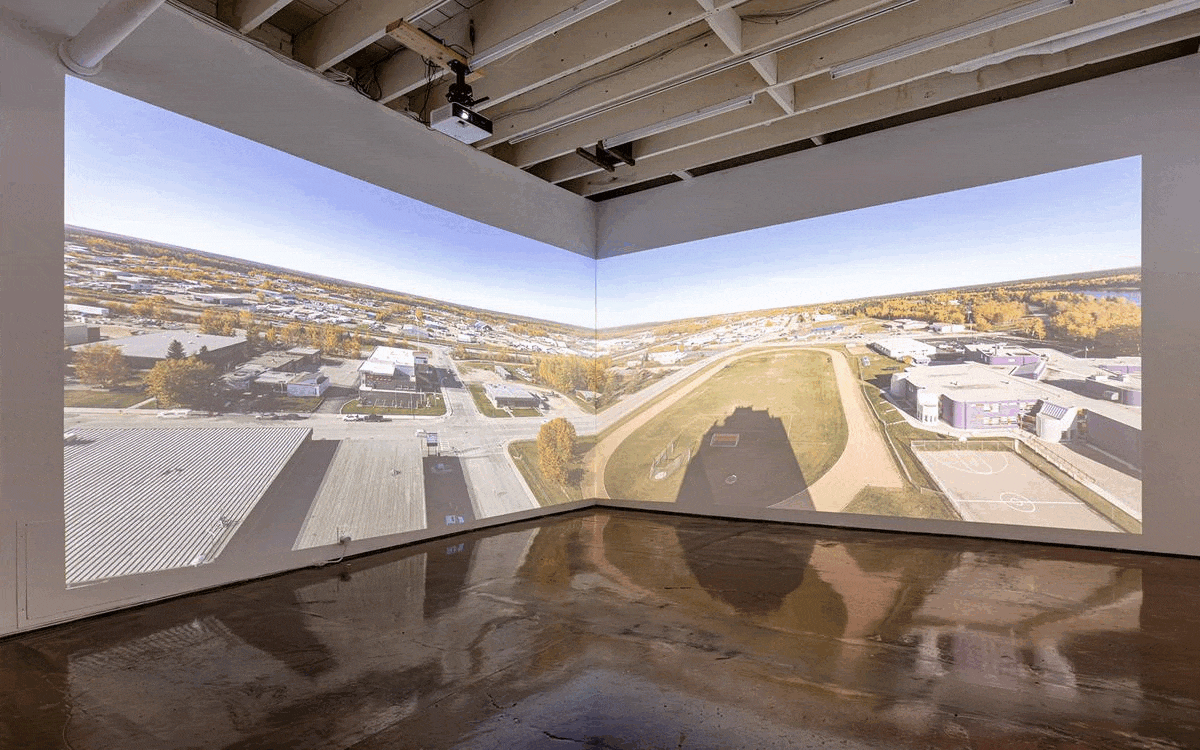
Positioning the slaughterhouses as a space “where the boundary between human, animal, and machine is produced and reproduced,” Aria Dean’s “Abattoir, U.S.A.!” opens at The Renaissance Society in Chicago. In her new film of the same name (image), the American artist takes viewers through an empty CGI slaughterhouse, probing “modernism’s intimacy with death.” Accompanying it in the gallery are abattoir architectural motifs to unsettle visitors: rubber flooring, side walls, an aluminum door.
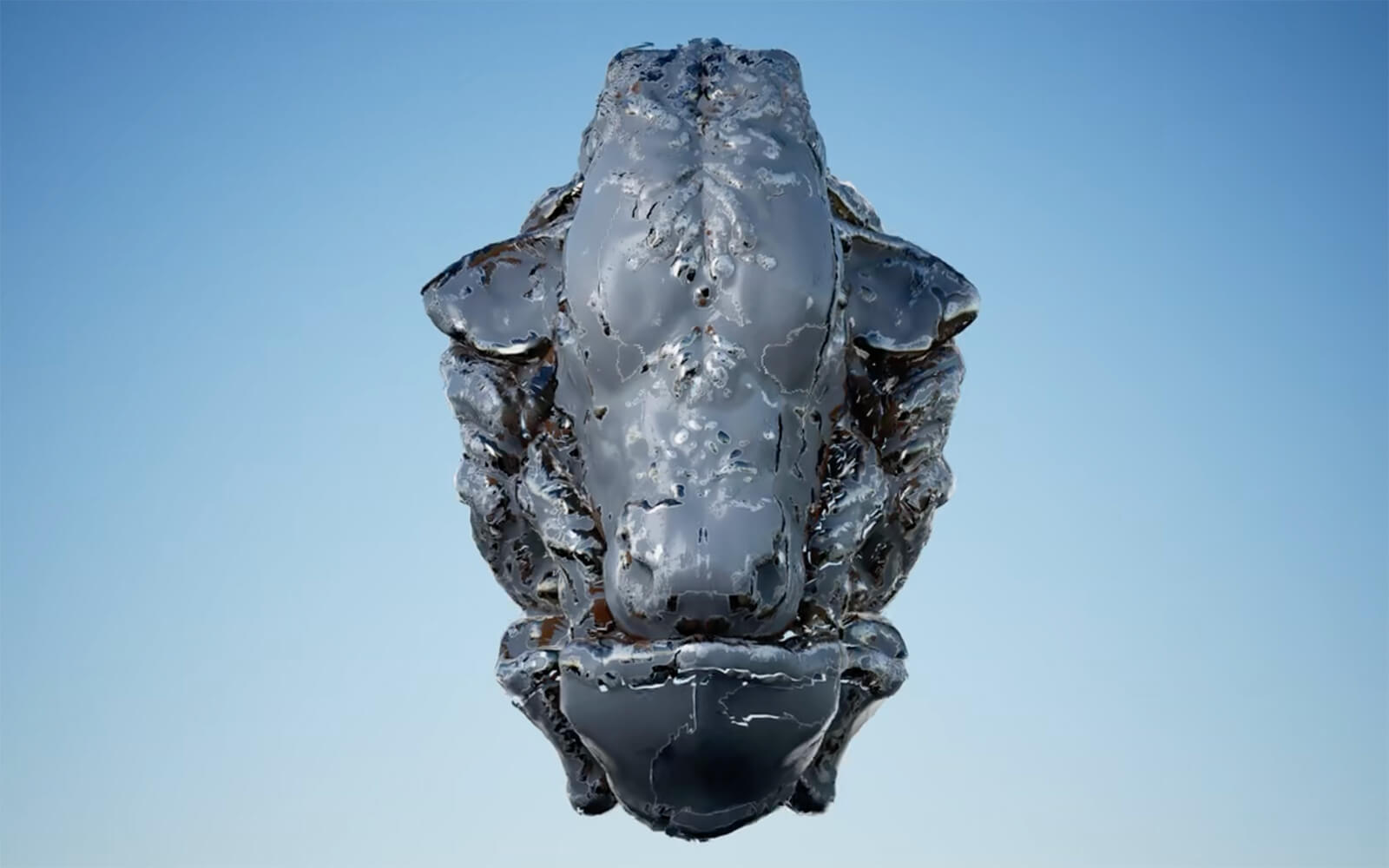
“Holding Up The Sky,” a solo show by Caroline Monnet, opens at the Art Gallery of Burlington (AGB) in Ontario, Canada. Foregrounding her interests in indigenous geometry and the figure of the cube (image: It Cracks with Light, 2021), the Franco-Anishinaabe artist presents The Room (2023), a 3 square metre assembly of inscribed styrofoam. The installation, and another made of PVC pipes and conduits, rebukes “prescriptive colonial architecture … the urge to square and compartmentalize.“
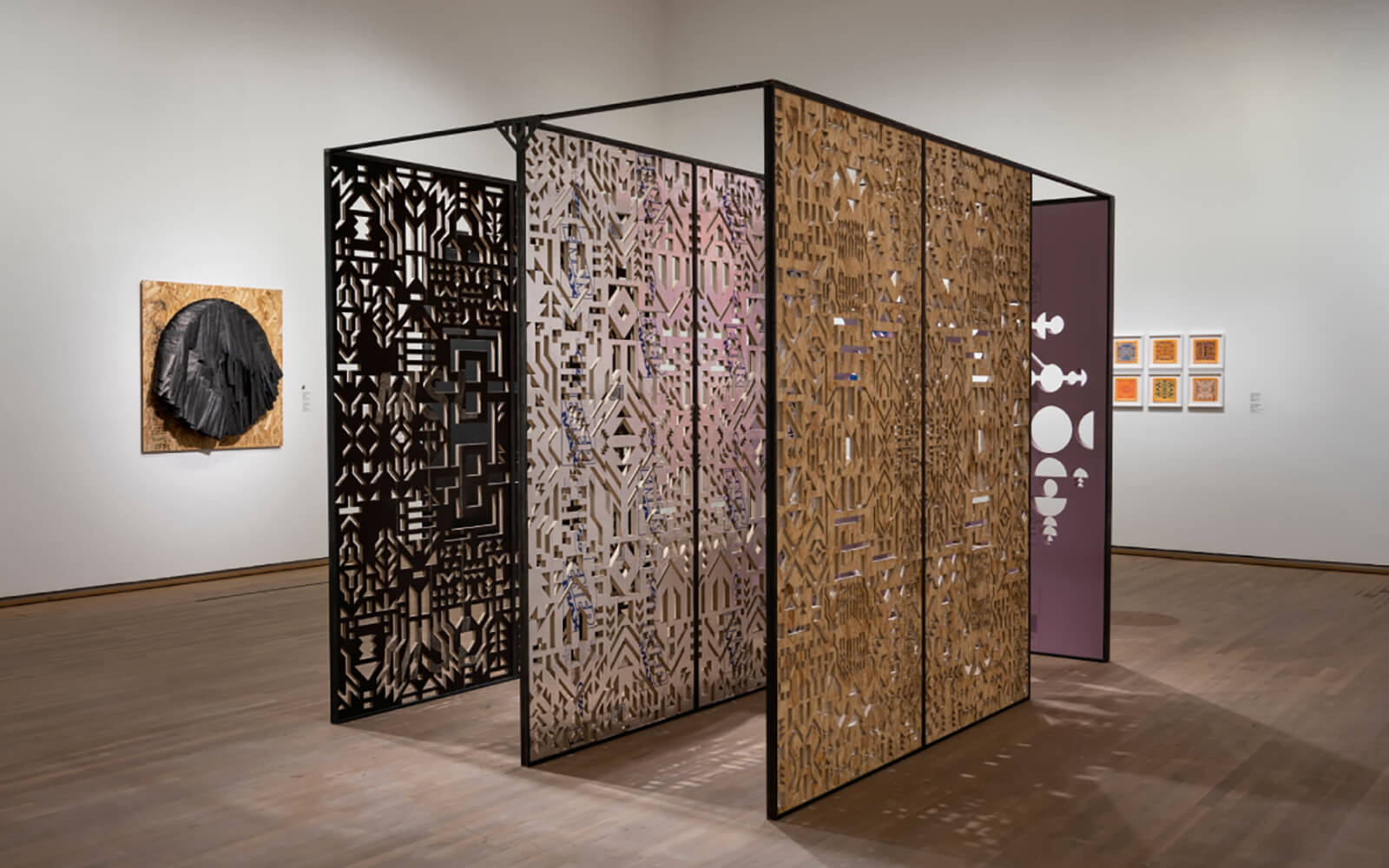
Central London live music venue Outernet debuts a new kinetic identity designed by type and motion studios NaN and DBLG. Dense and dynamic, a grid of animated wordmarks and mutating colourful 3D forms scroll across the venue’s prominent 200 m media façade. NaN describes their contributed custom tilted display monospace typeface as drawing inspiration from “coding vernacular,” a graphic “doubling down on the tech-oriented physical internet identity of the venue.”
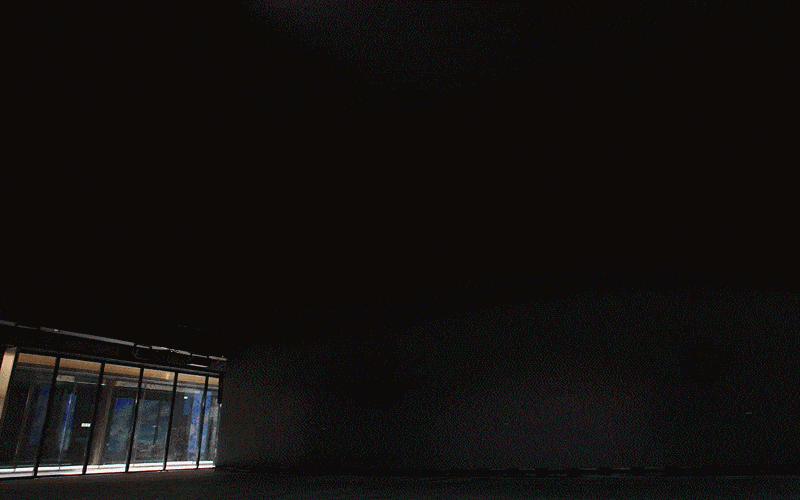
Transplanting the ringing of ten iconic bells from France to Turkey, “Silent Echoes: Notre-Dame” opens. Silenced after the 2019 fire that gutted the Parisian cathedral, sound artist Bill Fontana recorded the (currently decommissioned) bells into an eponymous 10-channel mix that makes its international debut in Istanbul. The installation is accompanied by recent experimental video work that explores related soundscapes (image: Silent Echoes (Acoustic images series), 2022).
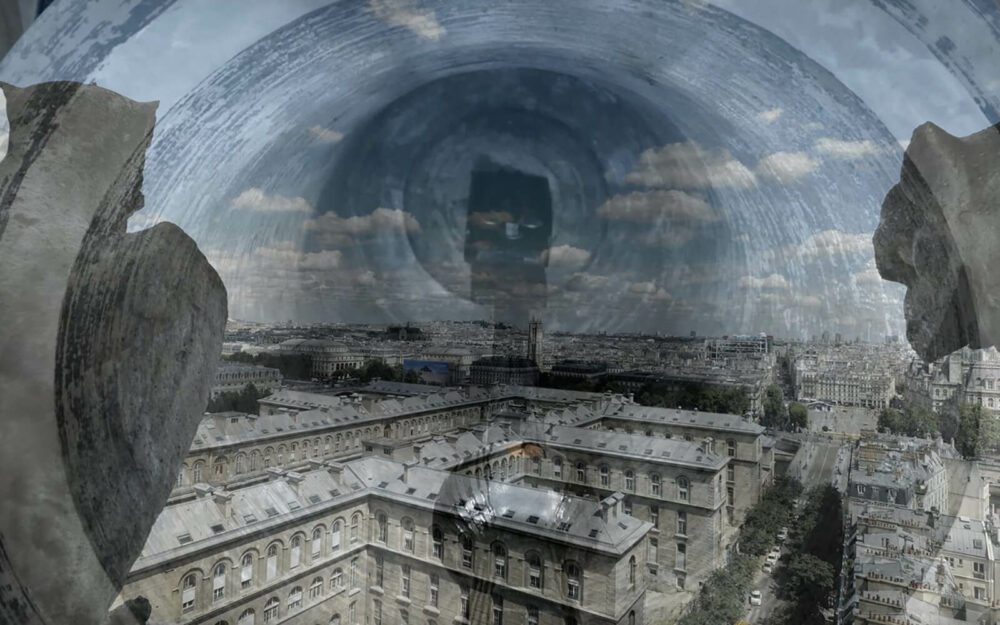
Celebrating the 90th anniversary of the birth of the trailblazing Korean American media artist, “Nam June Paik: Super Baroque” opens in Seoul. Featuring late career works, it includes Sistine Chapel (1993), Paik’s Venice Biennale media architecture ‘update’ to Michelangelo’s frescoes, his similarly architecture-focused Baroque Laser (1995), and the primary coloured reimagination of One Candle (1998, image) with a video camera and five CRT projectors.
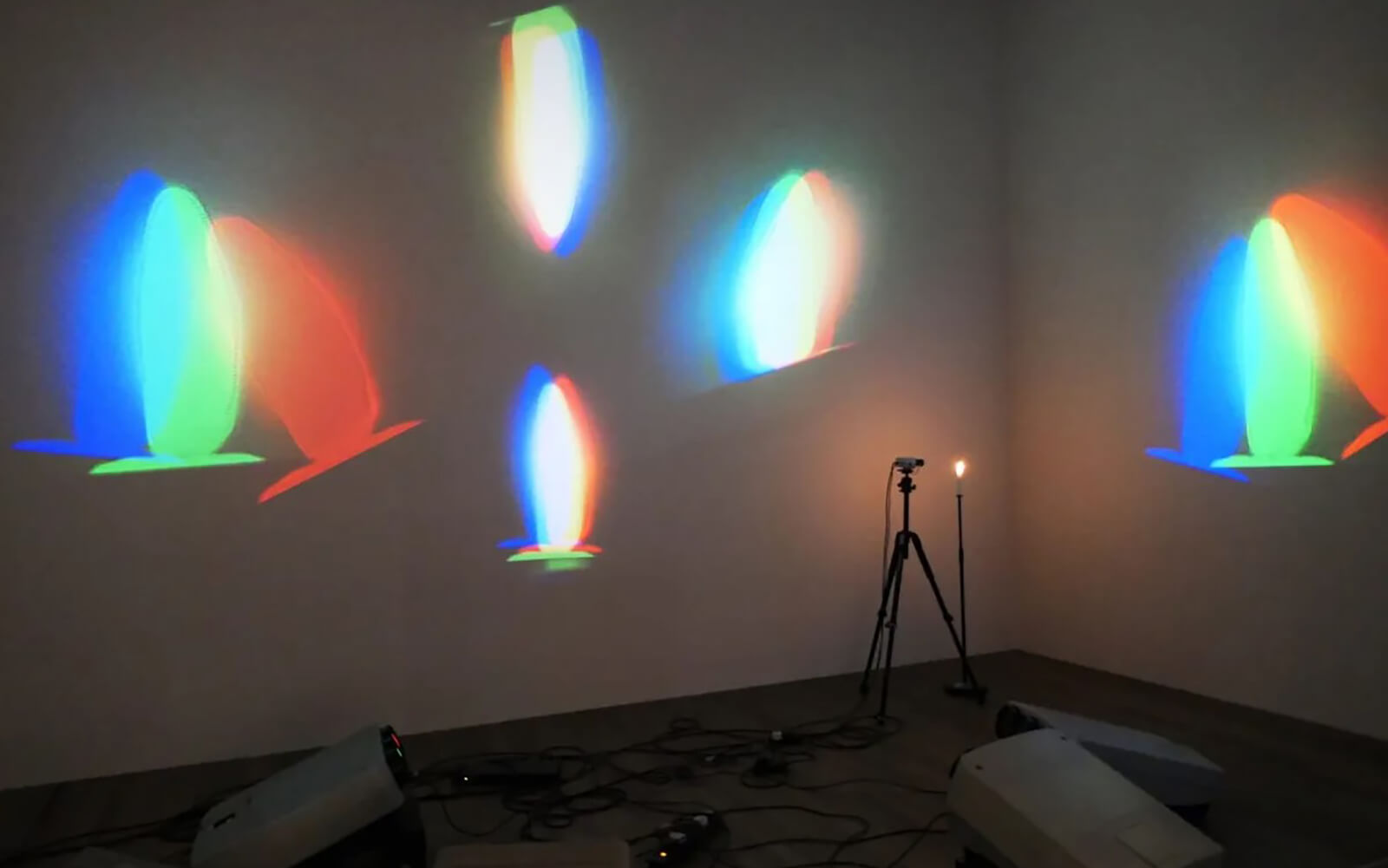
“The white coat acts as a hinge between the visible and the invisible. Its smooth surface actively resists the unseen bacterial sources of disease. It is a kind of inhospitality to disease.”
In the CLB Berlin exhibition “Assembly Strategies,” Chilean architect Pedro Serrano explores how JOYN MACHINE might help address local infrastructure needs sustainably. Developed by the research-driven Berlin-based Studio Milz, the portable all-in-one design and assembly system allows for low-cost, low-footprint fabrication of wooden architecture. During the inaugural JOYN residency in 2021, Serrano realized speculative spatial configurations “that have no site or client.”
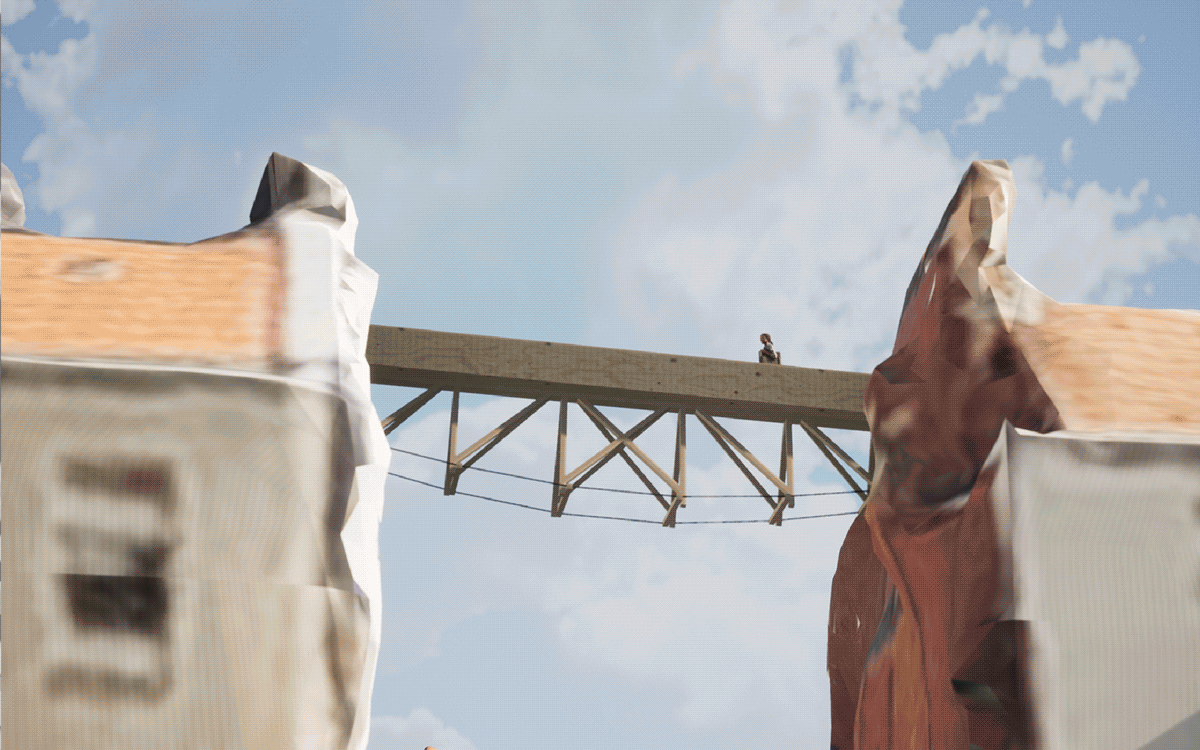
“Nature × Humanity,” a celebration of Oxman Architects’ biomorphic forms, opens at SFMOMA. Focused on the pressing question “what is the role of an architect in the age of climate change?,” Neri Oxman and collaborators present recent work exploring new materials and manufacturing techniques. Featured projects include a malformed chaise lounge and the Vespers masks (2018), through building- (image: Model for Gemini Cinema, 2021) and city-scale proposals.
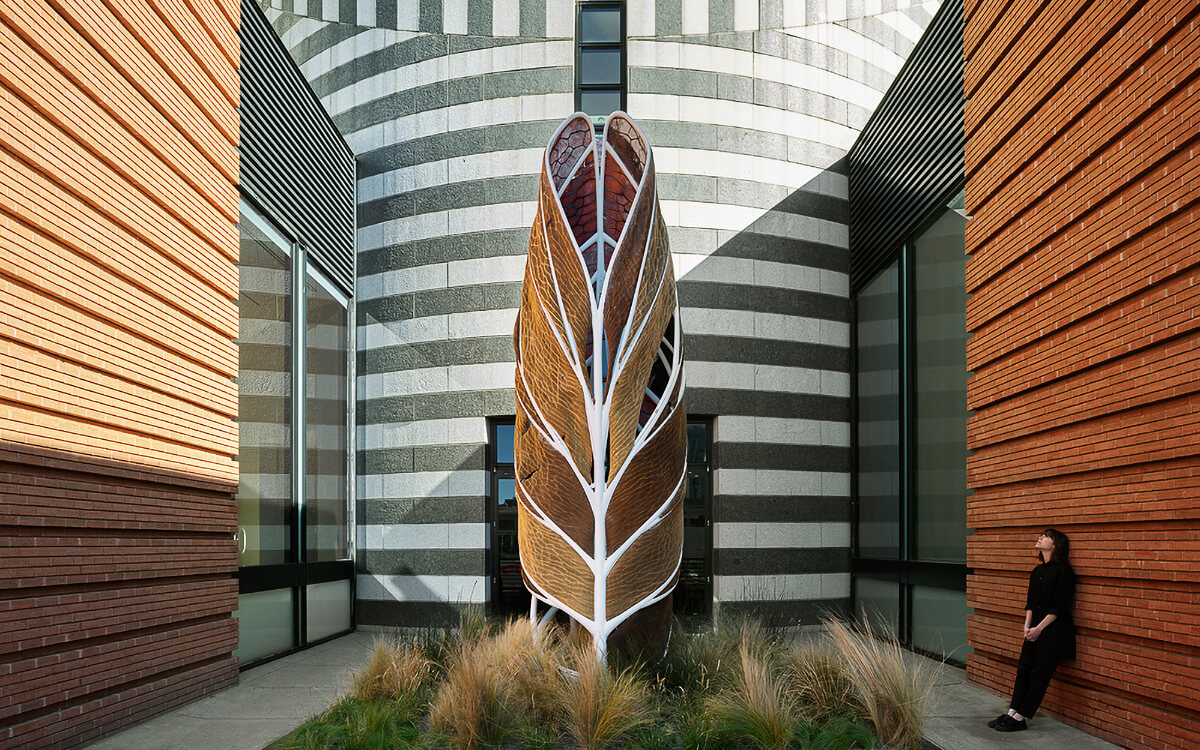
What comes after platform capitalism? An assemblage called ‘hyperstructures,’ according to Jacob Horne. In an essay published on his website, the co-founder of the NFT marketplace aggregator Zora outlines the frameworks he sees emerging around crypto protocols. Inspired by the utopian architecture of Paolo Soleri, Horne argues the permissionless nature of hyperstructures generates low-friction exchange, yielding more equitable outcomes for participants (versus web 2.0 platforms where the user is the product). Is this the frothy rhetoric we’ll hear as money flows into web3? Yes, but Zora’s manifesto claim that “platforms hold our audiences and content hostage” is not wrong.
“Leaving your mark can also be acting responsibly and making contributions to our environment which have not necessarily got great big signatures written all over them.”
“Within the carefully tended landscape of the mother of all biennials, the role geopolitical conflict plays in ‘living together’ is generally avoided. It seems it is easier to envision a utopian future than come to terms with the dystopias we inhabit.”
“Normally, good parties have people in them. The smells of sweat, the sticky limbs, the flânerie, the dopamine just gushing.”
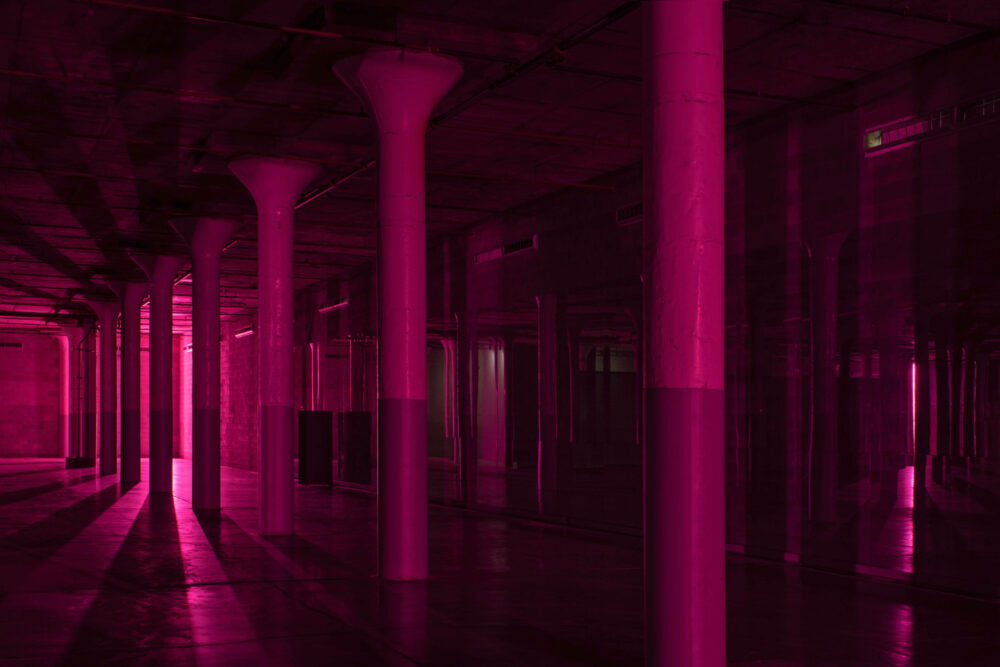
“Like all technologies, light reflects larger expressions of power, carving up an architecture of visibility that shapes how lives are led at night, providing shelter for some and harmful exposure for others.”
Daily discoveries at the nexus of art, science, technology, and culture: Get full access by becoming a HOLO Reader!
- Perspective: research, long-form analysis, and critical commentary
- Encounters: in-depth artist profiles and studio visits of pioneers and key innovators
- Stream: a timeline and news archive with 1,200+ entries and counting
- Edition: HOLO’s annual collector’s edition that captures the calendar year in print
